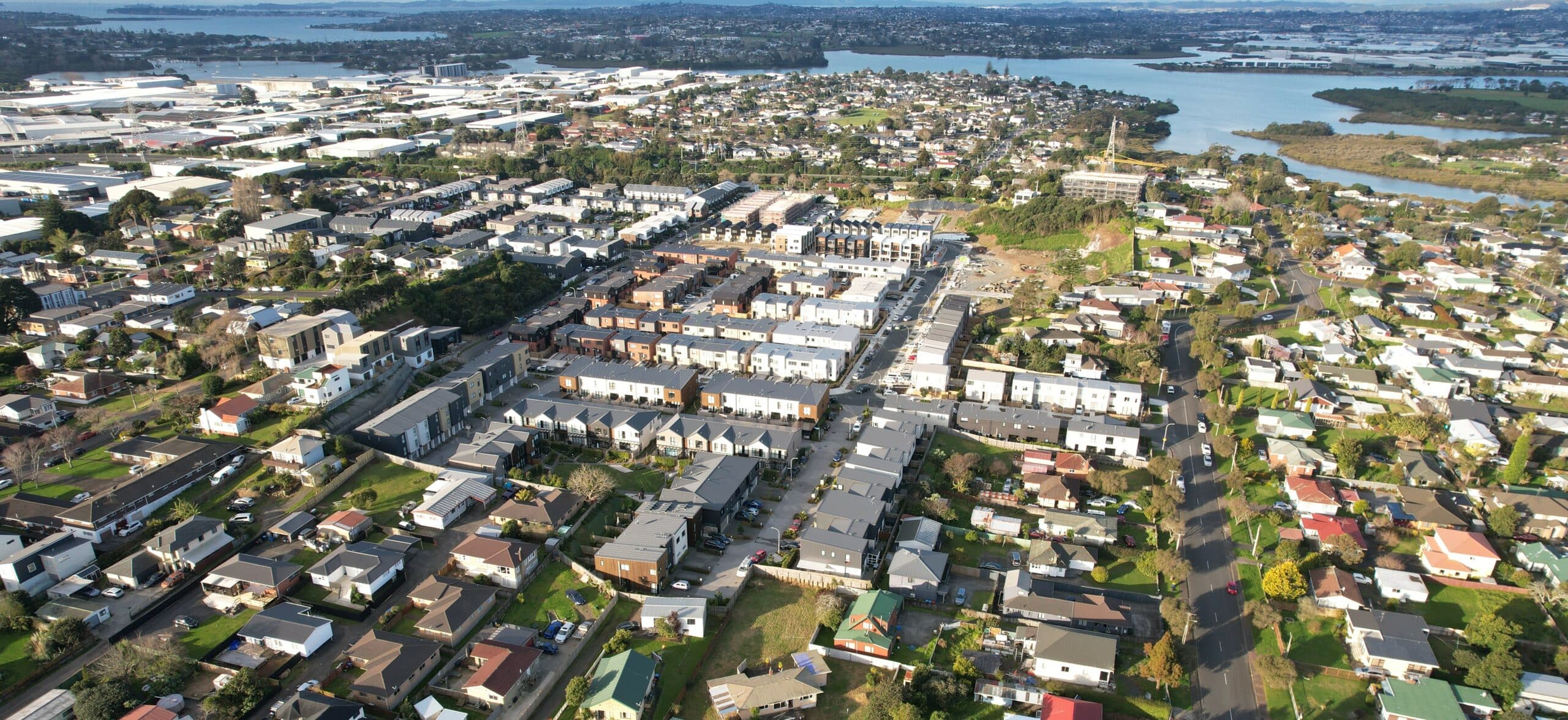Over the last decade, Auckland has experienced unprecedented residential growth in the form of medium density housing (MDH), with 62% of new dwellings consented in Auckland in 2023 being medium and high-density typologies¹. Auckland is still in its infancy in delivering MDH relative to other cities around the world, and there is a significant knowledge gap in terms of how well recently built MDH is meeting the needs of Aucklanders.
In late 2022, Auckland Council commenced a study to better understand the experience of Auckland households living in recently developed medium density housing². This included a number of methods to ensure a comprehensive view of how people experience living in their medium density home:
- An online survey of 1337 participants living in 1243 medium density homes across the region,
- Review of selected NZ and Australian best practice guidance,
- Analysis of the consented plans of 110 participating properties,
- In-home immersions (in-depth interviews) with 20 households, and
- A rapid literature review.
The research, published in September, found that:
- Medium density housing is meeting some of the needs of some households. Smaller households of one or two adults were more likely to report that aspects of their home met their needs, compared to larger households with children or multi-generational living.
- The average size of homes was found to be smaller than best practice guidelines. Over half of the consented plans analysed had internal floor areas smaller than the Auckland Design Manual (ADM) recommended minimums, with the ADM minimums being nearly half that of other NZ and Australian best practice guidance considered. Over half of households with children or two or more adults reporting that the size of their lounge did not meet their needs. Spare bedrooms and garages (if provided) were important spill over spaces for living activities.
- Storage is inadequate for many households. Over half of all participants reported that they had insufficient storage for general household items (e.g. vacuum), linen, kitchen equipment and food, and occasional items (e.g. suitcases). Kitchen storage for food and equipment was particularly insufficient, with over half of participants reporting they did not have enough built-in storage. This was leading to additional kitchen storage being placed in living areas and garages.
- Nearly a quarter of all households said they have more bathrooms than they need. Analysis of consented plans found that over half of 2-bedroom and 3-bedroom homes had more bathrooms that guidelines recommend. It was also found that spare bathrooms were often being used for storage or drying laundry.
- Upper levels of terraced houses and duplexes are too hot in summer. The combination of large windows, small window openings, solar orientation, reduced natural ventilation and minimal shade provision (e.g. eaves, established trees) are resulting in homes that are too hot in summer. Over half of participants in terraced houses and duplexes were making changes to cool their home. Participants in apartments were more likely to be satisfied with the temperature of their homes.
- Outdoor living spaces are highly valued by participants in all medium density homes. Over half of participants were satisfied with the privacy of their outdoor living space, and the amount of space for gardens.
- Many households have more cars than off-street parking spaces. Only half of households with a garage use it for carparking. Garages are important multi-functional spaces that are also used for living activities, storage, exercise, and as a study/WFH space.
- Some households were not able to have friends and whānau visit or do other things such as hobbies, that were important to them. This was primarily due to a lack of space and visitor carparking.
The study provides a snapshot of the voices of Aucklanders living in MDH, who have told us what is working well and what could be improved in their home. The unique insights provide an opportunity for the development sector to respond to the challenges of MDH and work collaboratively and innovatively to enhance the quality and functionality of medium density homes. This is critical to ensure that MDH meets the day-to-day needs of a wider range of households in the future. Auckland Council will use also the research to help inform the Auckland Design Manual, the council’s non-statutory best practice guide for design and construction.
Authors
Melanie McKelvie, Team Leader Design Review, Auckland Council
Kathryn Ovenden, Principal Social Scientist, Auckland Council
For further information contact Auckland Council.
FOOTNOTES
- ‘Townhouses, flats, units, and other’ as defined by Stats NZ.
- Defined as having received a code compliance certificate between November 2016 and September 2022, and being a terraced house, duplex or apartment. The study focuses on privately developed housing and does not include social housing. Auckland’s city centre and Hobsonville Point have also been excluded.

